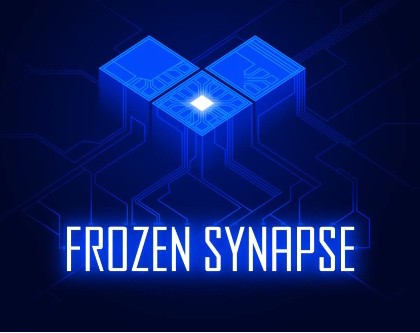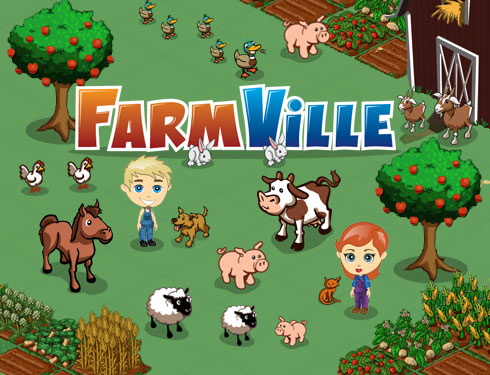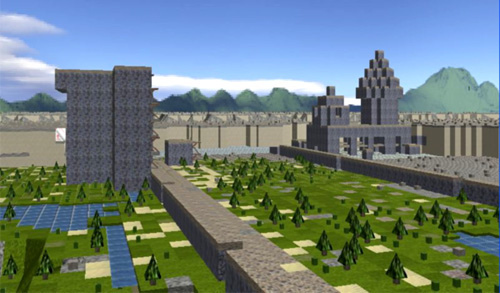盤點獨立遊戲開發者的12個開發和運營技巧
原文:http://gamerboom.com/archives/26049
Mode 7是位於牛津的獨立遊戲工作室,其進展中的專案是極受人歡迎的多人和單人策略遊戲《Frozen Synapse》,本作可在PC和Mac上執行。該工作室成員Paul Taylor在Games Brief上發表客座文章,以下是遊戲邦編譯的相關內容:
本文的目標群體是那些想要製作遊戲的人,這正是我們在Mode 7對自己的定位。我們並沒有成為下個Zynga或動視公司的抱負,只是想做小型但能夠盈利的工作室。如果你認為自己的定位與我們相近,或者你希望通過製作 獨立遊戲維持生計,那麼你可能發覺以下內容對自己有所幫助。在此,我並不想裝作對行業相當熟悉,我還遠未達到那種水平,我們也都是邊做邊學。

Frozen Synapse
1、需要商業頭腦
要通過獨立遊戲維持生計,首先你需要有商業思維。如果這種說法令你感到無所適從或者你對此不感興趣,那麼就需要馬上找個有商業頭腦、富有創造性且支 持相關專案的運營合作伙伴。你應該嘗試成為或找到良好的商業會計,從Business Link之類的組織那裡得到些許基礎建議。開發者需要從艱難的商業操作中脫身,你的會計應該要幫你解決任何自己感到棘手的問題。
2、制定切實可行的銷售目標
獨立遊戲能帶來多少利潤呢?到現在為止,鮮有獨立遊戲銷售量能超過100萬套。《Amnesia》所取得的成果較為合理,這款獨立遊戲的開發者已有 適當使用者基礎。遊戲特色是接近AAA級遊戲的影象設計,銷售量近期上升至將近20萬套。對其他獨立遊戲開發者而言,遊戲的銷售量能突破1萬或2萬便足以歡 呼雀躍。
因此,需要制定多少銷售目標並沒有確切的答案。坦誠來說,如果某個新開發者告訴我他的遊戲只能運行於PC上,而且想要獲得逾1萬的銷售量,我會為他的處境感到擔憂。我認為對某個有抱負心的獨立遊戲而言,理想的專案時長在1.5至2年間,但這只是我的個人觀點而已。
3、想法、美工和可玩性
平心而論,在遊戲釋出前,沒人真正知道哪種遊戲好賣。他們可以猜測,根據許多相關資料做出預測,但無法得到準確的答案。儘管如此,為了讓你的遊戲有可能成為令人滿意的產品,我認為有幾個要點需要注意:
想法
萌生好想法無規律可循,你需要預想哪些事物能夠滿足所有玩家或你認為能夠產生作用的特定群體的訴求。

Farmville
對於這個方面,我也無法直接提供什麼建議,重點在於開發者要記住應考慮受眾對你的想法會有何反應。我認為《Retro City Rampage》、《Farmville》、《Uplink》和《粘粘世界》這4款風格迥異的遊戲很明顯地傳達出作者的想法,相對於我的連篇累牘來說,它 們能更清晰地闡明我的觀點。只要你接觸上述遊戲,立時就可以清楚明白遊戲中的內容以及玩遊戲的樂趣所在,這正是想法所要達成的目標。
美工
如果想取得成功,那麼你的獨立遊戲就必須在視覺上吸引人。每天都有大量給人帶來視覺衝擊的獨立遊戲浮現,看看Indiegames.com等網站的 報道就能知道這一點。玩家選擇遊戲是因為影象,而為遊戲所吸引是因為可玩性,這二者你都需要。這裡我說的並不是昂貴的AAA級遊戲影象,我指的是那些能夠 立即產生巨大視覺衝擊的內容。《Dwarf Fortress》做到了這一點,其ASCII介面瞬時吸引使用者關注。
你需要找到用極低成本製作閃亮新穎視覺效果的方法。這聽起來不是很容易,但作為富有創造力的獨立遊戲開發者,這正是你發揮才能之處。 Lexaloffle(遊戲邦注:某獨立遊戲公司。)以低成本但引人注目的方式重現被人所遺忘的影象技術,實現上述目標。這也是他們的遊戲預告片已有20 萬人觀看的原因。
最後,有兩樣東西對你不無裨益:細節和趣味性。遊戲在視覺上取得成效後,你可以回頭新增各種內容,包括有趣的事物、小動畫、詭異的細節、隱藏區域和選單影象等。手工製成的小細節融合起來才能構築精品,評論員和消費者會注意到你付出的辛勞。
可玩性
好的遊戲設計人員會牢牢把握兩種對立的技術:抽象規則系統和實際設計方法。如果你精通前者但感到後者甚為棘手,儘早讓他人蔘與到遊戲中,因為那時的 反饋資訊能夠有所幫助。“早釋出隨後經常修改並測試”的想法也正是因此而產生。需要提醒的是,對大部分玩家來說,如果沒有像樣的藝術(遊戲邦注:這裡的藝 術指上文提到的美工。)作為前提,他們幾乎未曾考慮評價遊戲的可玩性。

Dwarf Fortress
遊戲設計是個需要花畢生精力來掌握的技能,這是個職業。和許多職業類似,很多人認為只要他們有機會從事,就會做得很棒,這些人的想法絕對是錯誤的。如果遊戲的可玩性不足以讓人們向朋友推薦你的遊戲,你就無法獲得使自己得以繼續發展的資金,事實就是這樣。
4、設計付費模式
在設計遊戲時,考慮付費模式。這裡我提些中肯的意見,就目前PC和Mac上的盈利而言,包含虛擬商品的免費遊戲位居首位。它們允許鍾愛遊戲的消費者 花更多錢,也可以從其他渠道獲得少量營收,比如玩家購買遊戲的完整版。雖然事態如此,但此類方式營收最高並不意味著你必須採用這種方法,或許它並不適合你 想要製作的遊戲。記住,我們是想要製作遊戲的人。你製作遊戲的原因在於創造,而不是想要儘可能多賺錢。
因此,傳統的一次性付費對個人和小公司來說仍然是行之有效的方案。需要注意的是,如果你確實選擇一次性付費方式,我建議你儘早關注擴充套件包和為真正喜 歡遊戲的消費者提供更多價值的方式。有證據表明,一次性付費比免費更容易讓玩家著迷,因而你可能獲得某些想要得到更多內容的激情粉絲。
這種方式對消費者也更為友善,你無需不斷叨擾人們讓其付費,讓你與消費者間的關係較為和善。要想知道如何讓多數消費者長期沉浸在遊戲中,看看Penny Arcade的做法。他們製作粉絲喜愛的產品,與玩家保持互惠關係。遊戲邦認為,獨立遊戲公司也可以採取相同的方法。
5、提供預購服務並增加其價值
對獨立開發者製作一次性付費遊戲來說,實行預購是種非常有效的手段。當有人預購我們即將面世的遊戲《Frozen Synapse》時,他們可立刻獲得測試版和能提供給朋友的免費版。到目前為止,這種方法已經使我們獲得一定的成功。在我們以這種方式釋出遊戲前,最重要 的事情便是等待直至測試版足夠好玩並稍加潤色。以上是我給考慮採用這種方式的開發者的建議。
我們決定不在釋出預購版同時釋出遊戲樣本,確保只有那些真正對我們的想法懷有熱情並願意投入時間的人才會得到測試版。雖然我認為這會限制預購群體的 數量,卻也創造出能夠顯著改善遊戲開發的極度狂熱和支援性玩家群體。當遊戲準備通過測試版接觸更多受眾時,上述做法可能將它提升至最佳狀態。

Minecraft
我認為,如果你的作品像《Minecraft》那樣容易讓玩家接受,那麼就沒有在開發早期不出測試版的理由。和上述所有建議類似,你做出此等決定之前需要考慮是否適合自己的遊戲。
6、考慮通過網路打擊盜版
盜版是獨立開發者面臨的一個很現實的問題,這意味著某些網路內容(遊戲邦注:這裡作者指代需要使用者購買後才能通過網路獲得的遊戲內容。)是你遊戲的 必需品,為那些真正想要付費的消費者提供遊戲的價值所在。當人們知道他們可以從其他地方免費獲得完整版遊戲時,只有那些好心人才會選擇付費購買。
通過融入網路內容解決這個問題的方法多種多樣,但我建議你採用取悅消費者而不是與消費者站在對立面的方式。彆強迫遊戲毫無目的地與你的伺服器連線,找尋可增加價值的有趣網路內容。
7、兼顧直接銷售和間接銷售
為讓某款PC上的可下載遊戲取得令人滿意的成就,你需要接觸每個主銷售渠道。獲得銷售渠道的技巧是什麼呢?那就是製作一款流行的遊戲並儘早釋出其相 關資訊。別隻依靠分銷商為你出售遊戲,直接銷售也可以賺很多錢。你需要如下內容作為支援:可靠的付費供應商(遊戲邦注:作者推薦 Fastspring。);讓使用者可輕鬆獲得遊戲資訊的清晰網站以及測試版下載和購買頁面;花時間優化網站並逐漸更新;以產生流量為基礎的市場計劃;網站 無需過於華麗,簡單有效即可。
8、市場
儘量在部落格、視訊或社交網路上多釋出相關資訊。以我的經驗來看,造勢與成功之間有直接的聯絡,吸引公眾注意對你自己或他人都有益處。
9、時刻關注銷售量

Google Analytics
你必須在網站上設立優良的站點分析,這是我曾經得到過的最有用的銷售建議。如若不然,你無從知曉遊戲售出或滯銷的原因。我強烈推薦使用Google Analytics,功能極為強大而且免費。
10、與其他獨立開發者和社群配合
獨立開發者逐漸開始協作,比如《Super Meat Boy》等交叉銷售遊戲或Cliffski的專案ShowMeTheGames.com。積極參與獨立遊戲社群對你的工作有益,但是別捲入暗戰之中。
11、理智使用展會
別在展會上花過多的資金,我還從未見過有人付大筆資金參展後便馬上得到豐厚的收穫。嘗試找到合法的方式,免費參加展會。但是,前往某些展會並與其他 人談論你的遊戲是必不可少的步驟,這種小機會或許能夠帶來真正有價值的巨大收穫。如果你在英國,我建議你參加Gamecity,正是這個展會讓我決定加入 遊戲業。
12、做自己的事,永不放棄
堅持對獨立開發者來說是最可貴的,你會在製作中犯錯誤,吸取教訓重新上路。只有你真正喜歡這件事,才能夠做成,這也是獨立遊戲在這個殘酷世界中的亮點所在!(本文為遊戲邦/gamerboom.com編譯,轉載請註明來源:遊戲邦)
12 BUSINESS TIPS FOR INDIE GAME DEVELOPERS
This is a guest post from Paul Taylor of Mode 7, an indie development studio based in Oxford. Their current project is Frozen Synapse, a critically acclaimed multiplayer and single player squad-based tactical game for PC and Mac.
This post will be of most use to people in the “Anyone Who Wants to Make Games” category, which is where we at Mode 7 would place ourselves. We don’t have ambitions to be the next Zynga or Activision; we want to be small but profitable. If you find yourself in a similar position, or even if you’re a one-man-band developer trying to make a living from indie games, you may find the following helpful. I don’t pretend to have all the answers – far from it – we’re all learning as we go.
1. Business brain required
To make a living from indie games, you will have to start running your own business. If this idea scares you, or you find it uninteresting, then get yourself a commercially-minded but creatively-sympathetic business partner immediately. You should try and get hold of a good business accountant (hard to find!) and get some basic advice from organisations like Business Link. There is nothing about the basics of running a business which is remotely difficult: your accountant should be able to help you out with anything you don’t understand.
2. Have realistic sales targets
How much money can an indie game make? Well, we’ve now seen that a statistically insignificant percentage of indie games can sell over a million copies! More sanely, Amnesia, an indie game from a developer with an existing fanbase, which features graphics approaching AAA quality recently managed to sell nearly 200,000 units. Other indies are delighted when their games break 10k or 20k units.
So, this is a “how-long-is-a-piece-of-string” situation. But suffice it to say, if a new developer told me that his or her PC-only game required sales of over 10k units to break even, I would be concerned for them. I think the ideal project duration for an ambitious indie game is 1.5 – 2 years, but that’s just my personal opinion!
3. Concept, Aesthetic, Gameplay
Fundamentally, nobody really knows which games will sell well until they are launched. They can guess; with a lot of relevant data they can make ballpark predictions, but they can’t know. However, I think there are boxes to tick in order to allow your game a chance of being a decent product:
Concept
There’s no formula for coming up with a great concept; you’re trying to divine something that will appeal to a range of people, or a specific niche that you think is under-served.
Also, there’s almost no point giving direct advice about this, save that it’s important to bear in mind what people other than yourself will think about your concept. Here are four very different games that I believe have very strong concepts; they’ll illustrate my point better than another paragraph of my waffle: Retro City Rampage; Farmville; Uplink; World of Goo. As soon as you encounter each of those games, it’s very clear what’s going on and why you’re likely to have fun if you play them. That’s the goal of a concept.
Aesthetic
Your indie game must look spectacular to even be a mild success. Heaps of visually attractive indie games are coming out literally on a daily basis: just take a look at TIGsource or Indiegames.com or RockPaperShotgun to see what I mean. People will come for the graphics and stay for the gameplay; you need both. I’m not talking about expensive AAA graphics here; I mean something that has a massive visual impact instantly. Even Dwarf Fortress does this: its ASCII look is immediately intriguing.
You need to develop a way of creating a brilliant original look with very little cost. Not easy, but as an inventive indie, doing clever things is your job! Lexaloffle have done this by resurrecting a forgotten graphics technique in a low-fi but striking way… That’s why their trailer has 200k views already!
Finally, two things that will never, ever hurt you: detail and “spice”. Once your game is visually functional, go back and add stuff – funny things, little animations, quirky details, hidden areas, motion graphics for the menus. Polish is an accumulation of small, hand-crafted details: reviewers and customers will notice the effort you’ve put in.
Gameplay
Good game design involves both a strong grasp of abstract rule systems and a practical hands-on iterative approach: skills which are at opposite poles. If you’re good at the former but poor at the latter, get other people involved at the earliest possible time when feedback is useful. This is where the tried and tested “release early and often” concept comes in. One word of warning: most gamers find it almost impossible to evaluate gameplay without some decent art on top.
Game design is a skill that takes a lifetime to master: it’s a vocation. Like many vocations, a lot of people think they’d be great at it if they just had a chance to do it: these people are almost always wrong. If your gameplay isn’t good enough for people to recommend your game to their friends, you won’t sell enough copies to keep going: that’s a fact.
4. Make payment models part of your design process
Think of your payment model as part of your game design. Here’s some mild conjecture: free-to-play games incorporating virtual goods offer the highest possible ceiling in terms of revenue on PC and Mac right now. They allow customers who love the game to pay more than average, and they also capture small amounts of revenue from players at the other end of the scale, who otherwise might not buy a “full version” of the game. However, just because something has the highest ceiling does not mean that’s where you should aim: it may simply not be suitable for the type of game you want to make. Remember, we’re in the “Anyone Who Wants to Make a Game” category here; you’re doing this because you have something you want to create, not because you want to make the most money possible.
So, it’s important information that traditional “pay-once” titles are still very viable for individuals and small companies. One caveat: if you do go down the pay-once route, I would definitely urge you to look into DLC and ways of offering more value to customers who truly love your game. Pay-once arguably offers more opportunity for immersion and scope than free-to-play, so you may well gain some very passionate fans who would love to get hold of more content.
It’s also more customer-friendly: you don’t have to keep badgering people to give you money every five seconds. That could lead to a more meaningful relationship with your customers. For a good example of how to make the most of long-term customer commitments in gaming, look at Penny Arcade. They make products (and hold events) that their fans love; they have a truly mutually beneficial relationship with their community. There’s no reason that an indie games company couldn’t adopt the same approach.
5. Offer pre-orders – and add value to them
Pre-orders are a very strong route for indie developers making pay-once games. When someone pre-orders our forthcoming title Frozen Synapse, they immediately get a copy of the beta as well as a free copy for a friend; this has had a reasonable degree of success for us so far. The most important thing we did was to wait until the beta was exciting to play and fairly polished before we released it in this way: I’d urge anyone considering this to do the same.
We decided not to put out a demo with the pre-order, ensuring that only those who were excited by the concept enough to invest made it in to the beta. While I believe that this has restricted the size of our pre-order community, it has also created an extremely passionate and supportive group who have helped us out significantly with development. When the game is ready to reach a wider audience through a demo, it will be in the best possible shape because of this decision.
I think, though, that if you have an alpha with the ease-of-use and accessibility of something like Minecraft there is simply no excuse for failing to have a demo at an early stage. Like everything, you should make this decision based on what suits your game.
6. Consider online to beat piracy
Piracy is a very real issue for indie developers: it effectively means that your game needs some kind of online component in order to offer value to customers who do want to pay. Only very good-natured people will buy something they know they can get for free elsewhere with no negative consequences.
There are many ways of solving this problem by incorporating online components, but I’d urge you to do that in a way which is pro-customer rather than anti-customer. Don’t just force the game to contact your server for no reason: think of an interesting online feature which can add value.
7. Go direct, and go indirect
To have a decent success on the PC with a downloadable game, you’ll need to be on every major portal. The secret of getting on portals? Make a popular game and release information about it early! Don’t just rely on distributors to sell your game for you, though: there is still significant money to be made from direct sales. You’ll need the following: A reliable payment provider (we recommend Fastspring); A clear website which allows easy access to information about your game, a demo download and a buy page; Time spent on optimising your website and tuning it for conversions; A marketing plan based on generating traffic; Your website doesn’t have to be flashy or even particularly attractive (providing your game itself looks good); it just has to be simple and work.
8. Market, market, market
The only thing I want to add to this now is that it never seems to be possible to over-do it on the blogging, videos or social network front. Loudness seems to correlate directly with success in my experience: be as attention-seeking as possible without harming yourself or others!
9. Know your numbers
You must have a good web analytics package on your website: this is the single most useful piece of marketing advice anyone has ever given me. Without this, you won’t know why your game is selling or not selling. Google Analytics is immensely powerful and free: I highly recommend it.
10. Work with other indies, and the indie community
Increasingly, indie developers are banding together and collaborating. Look at some of the cross-marketing in games like Super Meat Boy, or projects like Cliffski’s ShowMeTheGames.com. Getting actively involved with the indie games community can really benefit your work: just don’t get distracted by the posturing and in-fighting.
11. Use events wisely
Don’t spend much money on events: I’ve yet to find anyone who can demonstrate a clear return from paying for a big stand at a show or similar. Definitely try and find legal ways of going to events for free! In any case, do go to some events and talk to a lot of people about your games: there is always a small-but-not-insignificant chance of making a really valuable contact. If you’re in the UK (or even if you’re not) I urge you to support Gamecity – it’s an event which sums up why I want to be part of the games industry.
12. Do it, and don’t ever give up
Persistence is the most important trait you’ll need as an indie developer. You’ll need to make mistakes, learn from them and carry on anyway. You have to love doing this in order to do it at all: that’s why the indie games scene is one of the best places to be in this cruel world! (Source: Games Brief)
